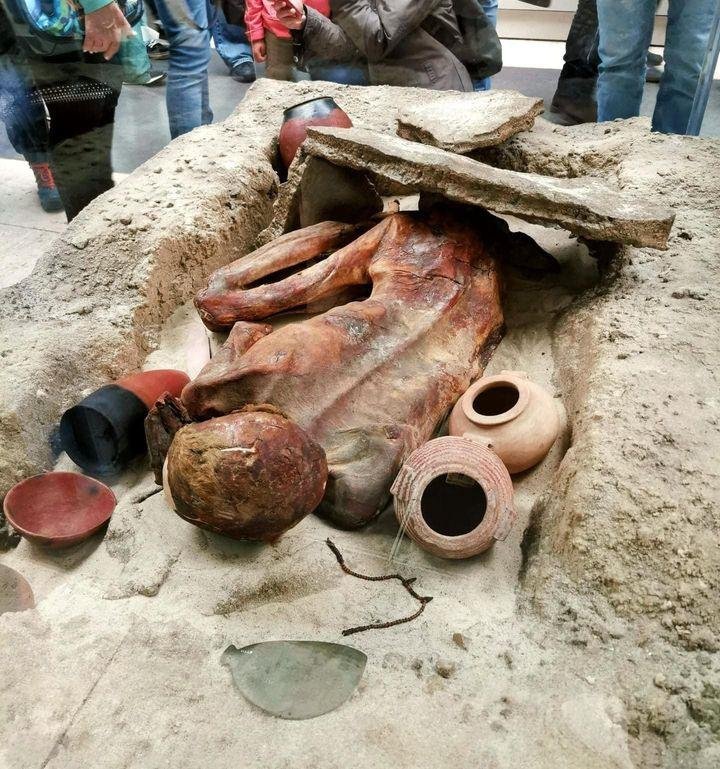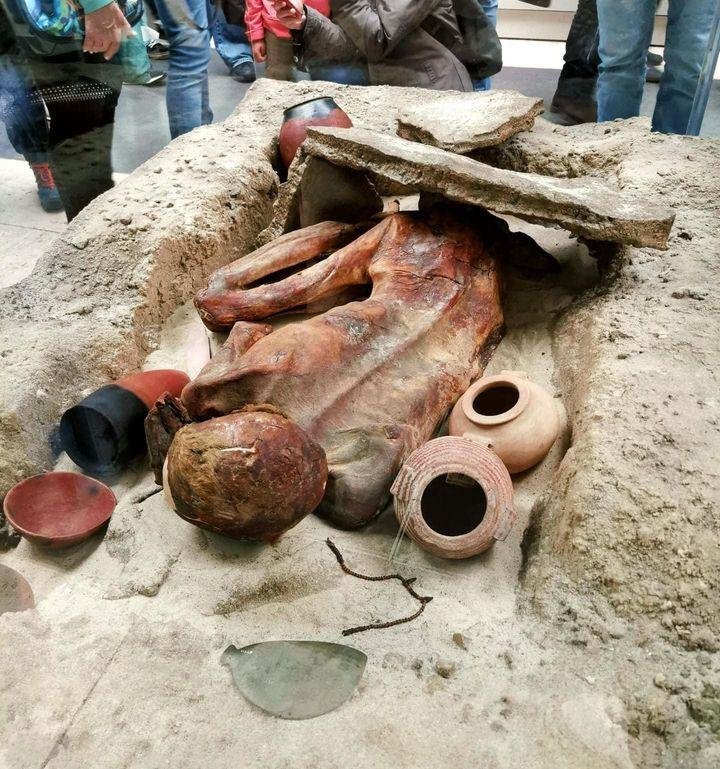In the annals of archaeological discoveries, few are as remarkable as the Gebelein Man—a 5,500-year-old mummy with intact skin, hair, and nails. Unearthed in the early 20th century in the ancient Egyptian necropolis of Gebelein, this well-preserved individual offers invaluable insights into the lives, customs, and beliefs of ancient Egyptians. This article delves into the remarkable preservation of the Gebelein Man and the significance of his discovery in unlocking the mysteries of ancient Egypt’s past.

Discovery of the Gebelein Man: The Gebelein Man was discovered in 1896 by archaeologist Wallis Budge during excavations in the Gebelein necropolis, located along the Nile River in Upper Egypt. The mummy, dating back to the Predynastic period (circa 3500-3100 BC), was found buried in a shallow grave, surrounded by funerary offerings and artifacts. What sets the Gebelein Man apart from other ancient Egyptian mummies is the exceptional state of preservation of his skin, hair, and nails—a rarity in archaeological finds of this age.
Remarkable Preservation: The remarkable preservation of the Gebelein Man can be attributed to the unique environmental conditions of the desert region where he was buried. The arid climate, coupled with the alkaline soil composition, acted as natural preservatives, preventing the decay of organic matter and facilitating the mummification process. Additionally, the shallow burial depth and the absence of moisture further contributed to the mummy’s exceptional condition.
Insights into Ancient Egyptian Life: The Gebelein Man offers valuable insights into various aspects of ancient Egyptian life, including physical appearance, clothing, and burial practices. Analysis of his well-preserved skin, hair, and nails provides clues about his diet, health, and daily activities. Furthermore, the presence of tattoos on his skin—a rarity in ancient Egyptian mummies—suggests a cultural or ritual significance, shedding light on the religious beliefs and practices of the Predynastic period.
Scientific Study and Analysis: Since its discovery, the Gebelein Man has undergone extensive scientific study and analysis to unlock the secrets of his preservation and unravel his life story. Radiocarbon dating and isotopic analysis of bone and tissue samples have provided insights into his age, diet, and geographic origin. Additionally, multidisciplinary approaches, including DNA analysis and forensic examination, have shed light on his genetic heritage and health status.
Preserving the Legacy: The discovery of the Gebelein Man highlights the importance of preserving our archaeological heritage for future generations. Archaeological sites like the Gebelein necropolis offer invaluable opportunities for scientific research, cultural understanding, and public education. By safeguarding these sites and artifacts, we ensure that the legacy of ancient civilizations, including the remarkable preservation of individuals like the Gebelein Man, continues to inspire and inform us for years to come.
The Gebelein Man stands as a testament to the enduring fascination and mystery of ancient Egypt. His remarkable preservation provides a rare glimpse into the lives of ancient Egyptians and the cultural practices of the Predynastic period. As we continue to study and learn from the Gebelein Man and other archaeological finds, may we gain a deeper appreciation for the rich tapestry of human history and the remarkable achievements of our ancestors.




